 OSHA has a new Fact Sheet for “Confined Spaces in Construction” that is designed to keep workers and emergency responders safe in permit-required confined spaces.
OSHA has a new Fact Sheet for “Confined Spaces in Construction” that is designed to keep workers and emergency responders safe in permit-required confined spaces.
The new document from OSHA stresses that employers must select a service that has the ability to respond and conduct rescue in a timely manner based on site conditions and potential hazards specific to the space. It also states that “an employer who relies on local emergency services for assistance is required to meet the requirements of 1926.1211-Rescue and emergency services.”
This Fact Sheet includes information for emergency response providers along with key questions to consider before making a commitment to respond. It also emphasizes the importance of preplanning while encouraging service providers to work closely with employers in order to be properly prepared for the challenges they may face.
Click here to download OSHA Fact Sheet.“Permit-required confined spaces can present conditions that are immediately dangerous to workers’ lives or health if not properly identified, evaluated, tested and controlled.”

 This helpful new guide provides information for evaluating your rescue team or prospective rescue service based on the requirements of OSHA 1910.146 and 1926 Subpart AA. It includes a Rescue Team Evaluation Checklist from Appendix F and illustrates Confined Space Types 1-6, which is based on criteria from OSHA 1910.146. Roco’s method of categorizing confined spaces by various types can be useful in establishing practice requirements for your rescue service.
This helpful new guide provides information for evaluating your rescue team or prospective rescue service based on the requirements of OSHA 1910.146 and 1926 Subpart AA. It includes a Rescue Team Evaluation Checklist from Appendix F and illustrates Confined Space Types 1-6, which is based on criteria from OSHA 1910.146. Roco’s method of categorizing confined spaces by various types can be useful in establishing practice requirements for your rescue service. One of the skills that separates a good team from a great team is patient handling; how quickly and efficiently a patient can be packaged for movement. Patient packaging and lashing is one area that can save a lot of time during a real rescue. This becomes even more critical when rescuers are wearing SCBA. Good patient packaging skills can significantly reduce the time rescuers and the patient are exposed to hazards.
One of the skills that separates a good team from a great team is patient handling; how quickly and efficiently a patient can be packaged for movement. Patient packaging and lashing is one area that can save a lot of time during a real rescue. This becomes even more critical when rescuers are wearing SCBA. Good patient packaging skills can significantly reduce the time rescuers and the patient are exposed to hazards.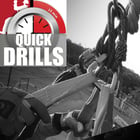

 Back in the day, most sites typically only offered fire brigade training for their emergency responders. Eventually, medical was added, then hazmat, and finally confined space rescue – primarily in response to OSHA 1910.146. And, with permit-required confined spaces, most often comes the need for high angle rescue abilities as well. Once a victim is removed from a confined space, there is generally the need for raising or lowering the victim to ground level for medical transport.
Back in the day, most sites typically only offered fire brigade training for their emergency responders. Eventually, medical was added, then hazmat, and finally confined space rescue – primarily in response to OSHA 1910.146. And, with permit-required confined spaces, most often comes the need for high angle rescue abilities as well. Once a victim is removed from a confined space, there is generally the need for raising or lowering the victim to ground level for medical transport.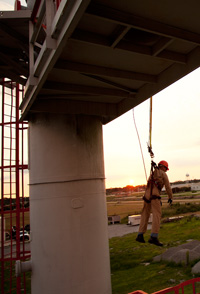 Suspended Worker Rescue (Rescue from Fall Protection)
Suspended Worker Rescue (Rescue from Fall Protection)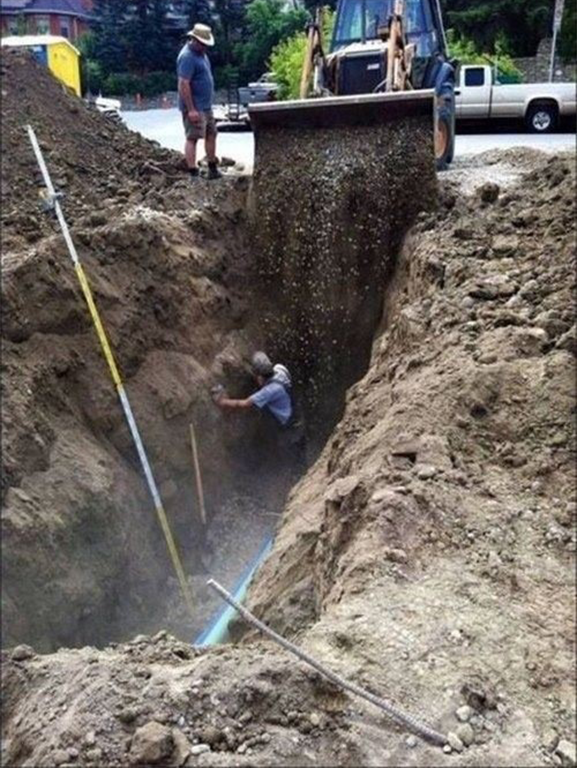 Trench Rescue
Trench Rescue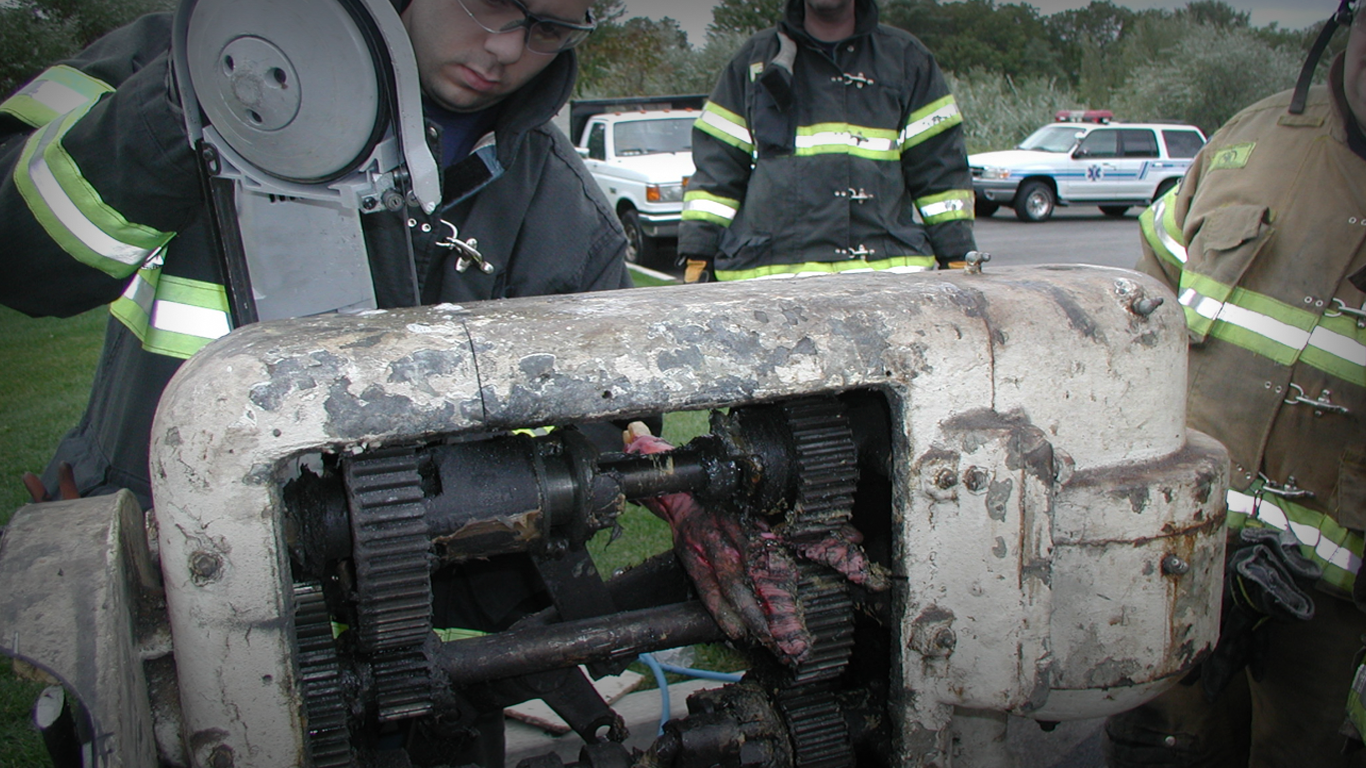 Machinery Entrapment Rescue
Machinery Entrapment Rescue
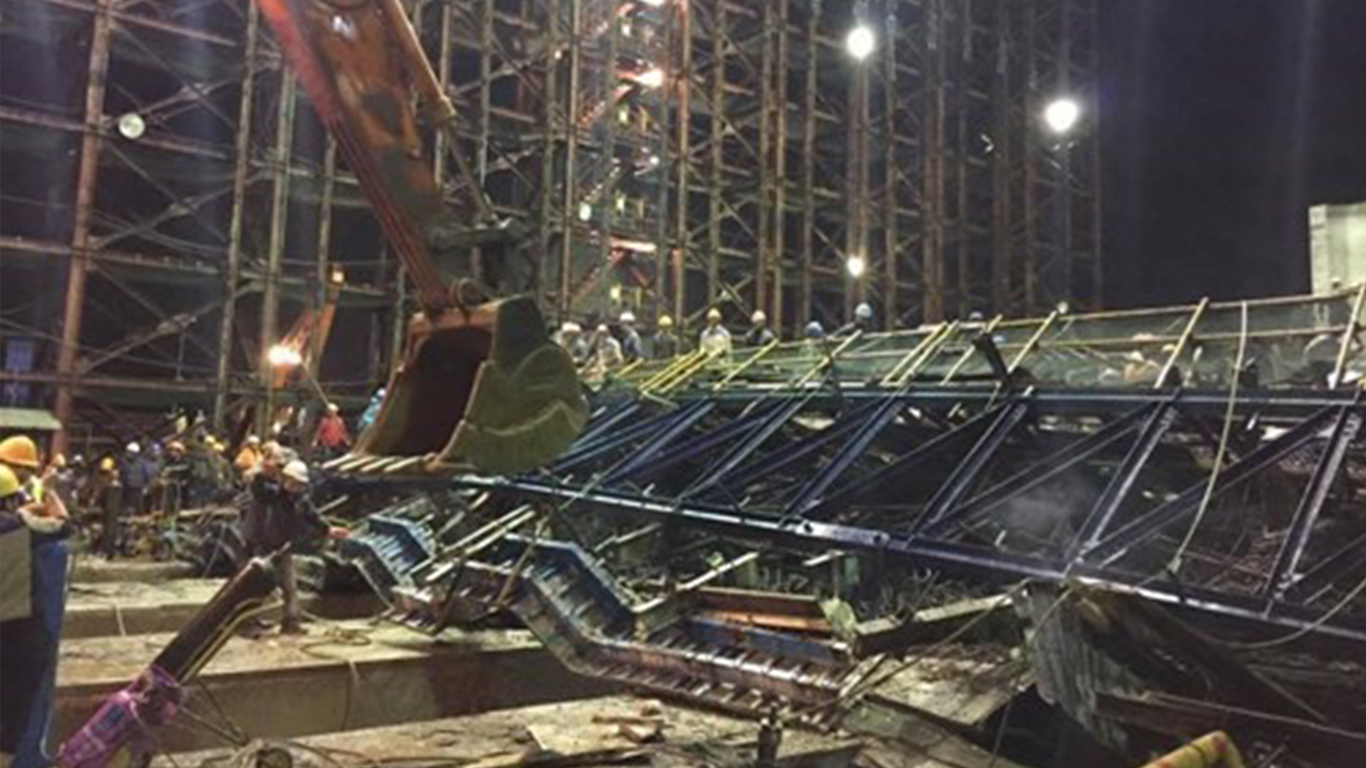 Building Collapse Rescue for First Responders
Building Collapse Rescue for First Responders In our opinion, the new OSHA regulation for Confined Spaces in Construction (Subpart AA of 1926) was worth the wait! This new standard is well thought out and includes some significant as well as subtle differences from the General Industry Permit Required Confined Space Standard 1910.146.
In our opinion, the new OSHA regulation for Confined Spaces in Construction (Subpart AA of 1926) was worth the wait! This new standard is well thought out and includes some significant as well as subtle differences from the General Industry Permit Required Confined Space Standard 1910.146. Also, several new roles and responsibilities have been added to the confined space regulations. One of the most important new roles is that of the “competent person” for confined spaces.
Also, several new roles and responsibilities have been added to the confined space regulations. One of the most important new roles is that of the “competent person” for confined spaces.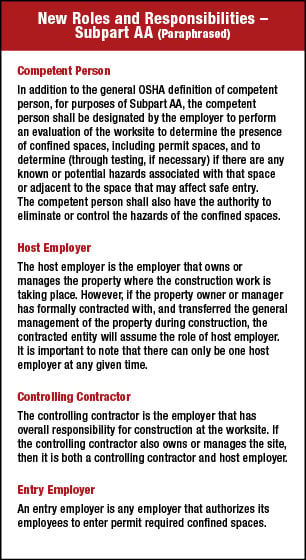 2. Includes more detailed provisions requiring coordinated activities when there are multiple employers at the worksite.
2. Includes more detailed provisions requiring coordinated activities when there are multiple employers at the worksite. It may seem to be a subtle difference in the two standards’ requirements, but now there is a specific role, or an identified position for conducting an evaluation of the worksite to determine the presence of confined spaces, a determination of the known or potential hazards associated with those confined spaces, and that has the authority to eliminate the identified hazards.
It may seem to be a subtle difference in the two standards’ requirements, but now there is a specific role, or an identified position for conducting an evaluation of the worksite to determine the presence of confined spaces, a determination of the known or potential hazards associated with those confined spaces, and that has the authority to eliminate the identified hazards.



